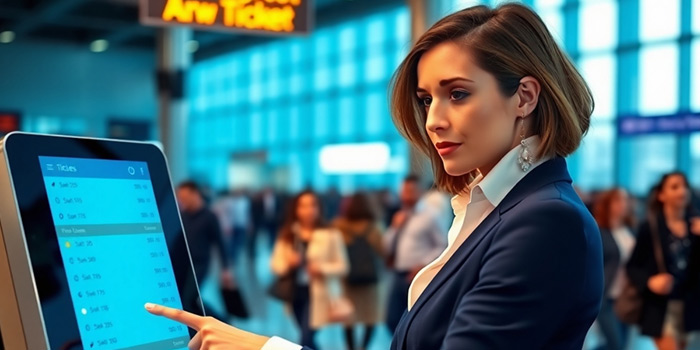The Psychology of Airline Pricing: How Perception Drives Profitability
02 Jul 2025
Highlights:
Pricing strategies have evolved far beyond the traditional equations of supply and demand. Today, successful airlines increasingly rely on the principles of behavioral economics to shape consumer choices and maximize revenue per seat. Through psychological pricing techniques, tailored fare structures, and tiered loyalty programs, airlines are not just selling seats—they’re managing perceptions, influencing behavior, and engineering value.

Understanding the psychology behind these practices offers valuable insight into how airlines achieve commercial success in a high-stakes, margin-sensitive industry.
Behavioral Pricing: Guiding the Consumer’s Hand
Among the most common—and effective—behavioral pricing tactics used by airlines are anchoring and charm pricing. These techniques operate on well-documented cognitive biases that influence how consumers perceive and evaluate prices.
Anchoring involves setting a high initial reference price to shape customer perception of subsequent offers. For instance, when a booking page first displays a fare of $1,200, then follows it with an “economy saver” option priced at $800, the latter appears to be a deal—even if the $800 price point is already profitable. This method taps into a well-known cognitive heuristic: once anchored to a high price, consumers adjust their expectations accordingly, often interpreting a lower fare as added value.
Charm pricing, meanwhile, exploits what psychologists refer to as the left-digit effect. A fare of $299 appears markedly less expensive than $300, even though the actual difference is minimal. Consumers focus disproportionately on the leftmost digit, creating the illusion of a bargain and nudging them toward a purchase decision.
Together, these techniques form the foundation of revenue management systems designed not only to respond to demand but to guide it.
Fare Classes: Engineering Choice and Perceived Value
Fare segmentation is another key arena where psychological pricing comes into play. While fare classes—basic economy, regular economy, premium economy, business, and first class—may seem like straightforward tiers of comfort and convenience, they are in fact carefully calibrated psychological levers.
Take basic economy, for example. This no-frills fare is often stripped of common amenities: no seat selection, limited baggage, and boarding restrictions. Its very existence enhances the appeal of the next tier up. This strategy, known as decoy pricing, introduces a low-value option not to be chosen, but to make mid-tier options seem more worthwhile by comparison.
At the other end of the spectrum, premium fare classes are designed to appeal to aspirational values—comfort, exclusivity, status. These cabins often contribute disproportionately to revenue despite representing a small percentage of seat inventory. Here, airlines enhance perceived value through priority services, elevated in-flight experiences, and marketing that emphasizes sophistication and care.
By orchestrating the perceived trade-offs between cost and benefit, airlines subtly encourage passengers to opt into higher-margin fare categories—even when their initial intent was to minimize spend.
Loyalty Programs: Retention Through Behavioral Incentives
Frequent flyer programs represent one of the airline industry’s most successful applications of psychological strategy. These programs are structured to take advantage of several behavioral tendencies, including loss aversion, the endowment effect, and social comparison.
Passengers who accumulate points or status tiers begin to view these rewards as assets they own. The fear of losing these perks—lounge access, priority boarding, free upgrades—can outweigh the appeal of lower prices offered by competitors. As a result, travelers are often willing to pay more or choose less convenient schedules in order to remain loyal to a particular airline.
Tiered loyalty systems also tap into aspirational psychology. Status levels such as silver, gold, and platinum create hierarchies that appeal to customers' desire for recognition and exclusivity. The promise of additional benefits at higher levels drives passengers to consolidate travel with one airline and even spend more to reach the next tier.
In this way, loyalty programs become more than a retention mechanism—they actively shape consumer behavior, reinforcing brand allegiance and enabling airlines to command a pricing premium.
The Art of Influencing Value Perception
The science of airline pricing is no longer limited to algorithms and capacity management. Today, it encompasses a sophisticated understanding of human psychology. Airlines that effectively leverage behavioral pricing, fare segmentation, and loyalty psychology not only boost profitability but also deepen customer engagement.
For travelers, this underscores the importance of awareness. Recognizing how psychological tactics influence perceived value can empower consumers to make more informed choices. For airlines, the message is clear: in an industry where differentiation is hard-won, the ability to influence perception may be just as valuable as operational efficiency.
In the end, the true battleground is not only price—it’s perception. And in the minds of consumers, value is as much about how it's presented as what it costs.
AviaPro Newsroom
+1 416-544-9969
info@aviaproconsulting.com

Editorial Contacts